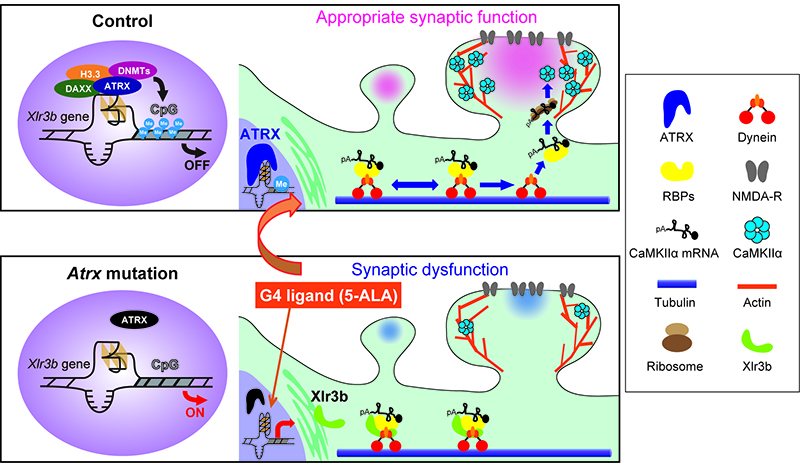Report shows promising treatment using previously established compound
In a research collaboration between Kyoto University, Tohoku University, and Gifu Pharmaceutical University, scientists report a new therapeutic agent effective for treatment of ATR-X syndrome. What's more, the drug is currently on the market and safety information has already been established. Their research was published in Nature Medicine .
Alpha-thalassemia X-linked intellectual disability syndrome -- ATR-X -- is a severe intellectual disability caused by a mutation in the ATRX gene. This gene plays an essential role in development, and while the exact function of the ATRX protein is unknown, previous research indicates that it regulates the activity of normal hemoglobin production by binding to a special DNA structure called G-quadruplexes.
The team investigated different compounds that could bind to G-quadruplexes in a similar manner as ATRX. It turned out that a readily available compound, 5-aminolevulinic acid -- 5-ALA -- was converted into G-quadruplex binding metabolites in the body.
To see if this compound could be used to treat ATR-X, the group administered 5-ALA to newborn ATR-X model mice for two months. Amazingly, the mice showed increased synaptic plasticity and cognitive ability compared to the control group, essentially lessening the ATR-X symptoms.
The findings suggest a potential therapeutic strategy to target G-quadruplexes and decrease cognitive impairment associated with ATR-X syndrome. As G-quadruplexes are involved in the pathology of other diseases, the discovery raises the possibility of 5-ALA being utilized in treating other diseases.
Although potential off-target effects remain to be investigated, 5-ALA has already been applied clinically with minimal risk, and approved for use as a photosensitizer in photodynamic diagnostics in neurosurgery. Therefore, its approval time could be short, and the cost of clinical trial greatly diminished.

ATRX normally binds to G-quadruplexes in the Xlr3b gene, and regulates its expression by recruiting DNA methyltransferases (above). Xlr3b binds to dendritic mRNAs. In ATRX mutations, Xlr3b is over-expressed and inhibits dendritic transport of the mRNA and causes synaptic dysfunction (below). (Kyoto University)





